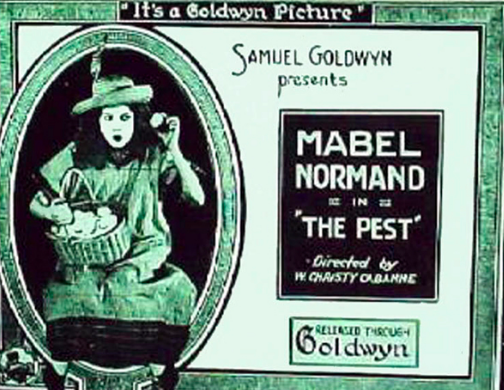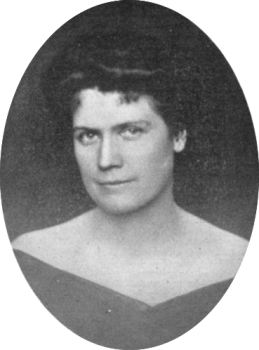
One hundred years ago this week, Grace Kingsley reported a story that she had no idea how sad it would become:
An accident, resulting in injury to Wallace Reid and nearly every member of his Lasky company occurred a few days ago while the company was en route to the big trees region in the northern part of the state.
Among the episodes to be photographed was a train wreck, and everything was set for the effect when unluckily the caboose carrying the entire company to the location jumped the track on the trestle bridge near Arcata, turned completely over and ended the work for the day.
Practically every member of the company was more or less injured. Wallace Reid sustained a three-inch scalp wound, which required six stiches to close, but was not seriously hurt. Grace Darmond, leading woman, and others were more or less bruised and cut. None, however, was disabled and the scenes were taken the following day.
According to his biography Reid actually was hurt more seriously than they told Kingsley: his head injury was a deep laceration, he had a gash in his arm and he injured his back. The next day he had blinding headaches. Stopping production on location would have cost $10,000 per day, so studio head Jesse Lasky ordered him to be given morphine so he could work. Reid quickly became addicted.
Even after the film was finished, the studio didn’t give him time off to heal, they just gave him more morphine. He drank too much alcohol, too, which made things worse. After he collapsed on the set of Nobody’s Money in 1922, he went to a sanatorium but it was too late. He died on January 12, 1923, only 31 years old.
Unfortunately, now if he’s remembered it’s as an example of an early Hollywood scandal, like Roscoe Arbuckle’s trials or William Desmond Taylor’s murder. For instance, Karina Longworth did an episode of the You Must Remember This podcast about him. It’s too bad all that hard work has been forgotten. Jeanine Basinger summed up his appeal in Silent Stars: “On-screen, he exuded self-confidence and cheerful good health, and his charm and acting ability were such that he carried his movies, most of which were slight vehicles designed to showcase his stardom. He was one of the most successful of the popular leading men of the teens and early twenties.” The film he was working on, Valley of the Giants, was presumed lost, but it was found in Russia at Gosfilmofond in 2010.
Kingsley got to have some fun at the movies this week:
The last word in fascinating, adroit crook comedies, when crook plays were the vogue on the stage, was Max Marcin’s Cheating Cheaters, [that was 1916] and now, in pictures, it lends itself equally well to the two-dimensional stage at Tally’s Broadway.
The path of the plot is as devious as the soul of the crooks. And what mounting comedy in the scenes in which we are let in on the fact that the two apparently respectable families who live on adjoining estates are really two bands of crooks, neither of whom knows that the other crowd are crooks.
It’s a lost film, so I’ll spoil it: the two ‘families’ figure out they’re all jewel thieves and decide to become one big gang. However, they don’t know that one ‘daughter’ is actually a renowned detective in disguise. She had fallen in love with the other family’s ‘son’ and decides to pardon the whole lot of them if they promise to help her catch crooks in the future. This solid idea for a comedy was made twice more, in 1927 and 1934. The last version was made after the production code was enforced, so he has to go to prison, but she promises to wait for him.

In other news, Mabel Normand’s apron got eaten by a goat on location while filming The Pest, and Grace Kingsley turned it into a two paragraph story. She was a pro! Luckily they were able to buy some material and Miss Normand made a new one. Even big Hollywood stars had sewing skills then, it seems.
Jeanine Basinger, Silent Stars, New York: Knopf, 1999, p.5
E.J. Fleming, Wallace Reid: The Life and Death of a Hollywood Idol, Jefferson, NC: McFarland, 2007, pp. 143-44.









 Captain “Dynamite Johnny” O’Brien (he once prevented a dynamite explosion) was born in Cork, Ireland in 1851 and he moved to the United States in 1862. According to the Puget Sound Maritime Historical Society, he’d been a sailor since 1867 and he became a steamer captain in 1888, mostly traveling between Seattle and Alaska. So he really did know a lot about ships; Keaton was clever to ask an expert. After 1919 O’Brien became a pilot in the Puget Sound. He was still working as a mariner, age 79, and living in Seattle according to the 1930 Census. He died the following year.
Captain “Dynamite Johnny” O’Brien (he once prevented a dynamite explosion) was born in Cork, Ireland in 1851 and he moved to the United States in 1862. According to the Puget Sound Maritime Historical Society, he’d been a sailor since 1867 and he became a steamer captain in 1888, mostly traveling between Seattle and Alaska. So he really did know a lot about ships; Keaton was clever to ask an expert. After 1919 O’Brien became a pilot in the Puget Sound. He was still working as a mariner, age 79, and living in Seattle according to the 1930 Census. He died the following year.













 His final film was Lying Wives (1925), which starred Clara Kimball Young in her last silent film. He kept trying to make movies as an independent producer and in 1929 he self-published a novel about the evils of monopoly in the film industry called
His final film was Lying Wives (1925), which starred Clara Kimball Young in her last silent film. He kept trying to make movies as an independent producer and in 1929 he self-published a novel about the evils of monopoly in the film industry called 














